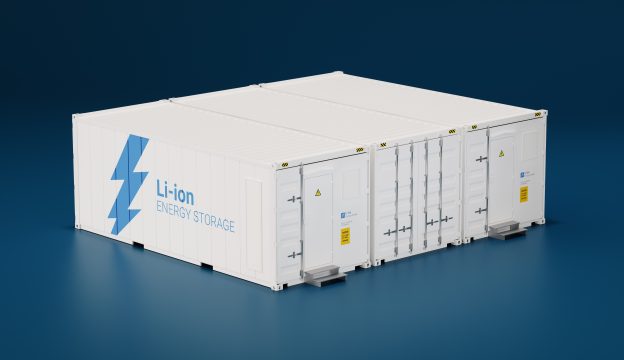Silicon China, a branch of China Nonferrous Metal Industry Association, released its latest report on the price trends of polysilicon materials used in the manufacturing of PV products on June 29. This update pertains to prices in China during this week (i.e. the week of June 27). Transaction prices of monocrystalline refeeding material have climbed to RMB 285,000-290,000 per metric ton, with the average coming to RMB 286,300 per metric ton and showing a hike of 4.83% from the previous week. Transaction prices of monocrystalline dense materials have climbed to RMB 283,000-288,000 per metric ton, with the average coming to RMB 284,200 per metric ton and showing a hike of 5.10% from the previous week.
Prices have kept rising in the Chinese polysilicon market this week, and the magnitude of the weekly increase has further widened. The average transaction prices of monocrystalline refeeding material, monocrystalline dense material, and monocrystalline cauliflower material have all jumped up by about 5%. Polysilicon suppliers have accepted orders in a rather sporadic fashion. Some suppliers have completed the monthly transactions (under the LTA framework) for July, while a few others have accepted upside orders at higher prices. As for the rest of suppliers, they are still focusing on expediting existing orders and have not made any new transactions.
Polysilicon prices in China have spiked up significantly this week on account of three factors. First, a supplier has unexpectedly shut down its facilities in Xinjiang for maintenance. This event, in turn, has caused supply disruptions for some LTAs. Currently, the Chinese polysilicon market is seeing both a drop in supply and a rise in the volume of upside and rush orders. This means that the undersupply situation has become even more pronounced. Second, prices of PV wafers have surged. By raising prices, wafer suppliers to some extent have either accepted or been able to absorb the continuing rise in polysilicon prices. Third, the planned production cuts by polysilicon suppliers that are undertaking facility maintenance have become larger. In fact, three more suppliers now plan to undertake facility maintenance in the third quarter. This development reinforces the view that the shortage in the Chinese polysilicon market will persist. In sum, the price upswing has gotten sharper this week because of the aforementioned factors affecting the upstream and downstream of the supply chain.
According to the latest data, China’s polysilicon production will reach around 61,600 metric tons for June, showing a slight decline of 1% from May. In the earlier projection, production was expected to register a month-to-month increase because a few suppliers would be activating new production capacity. Examples include GCL-Poly activating its new production capacity for granular silicon, Xinte raising output via technology upgrade, and Yongxiang releasing additional production capacity, etc. However, other suppliers’ activities have led to a greater reduction in the overall production. As mentioned earlier, a supplier has suddenly decided to shut down its facilities in Xinjiang for maintenance. Also, two other suppliers have scaled back output due to either energy consumption restrictions or equipment inspections. On the whole, China’s polysilicon production for June was much lower than expected.
In the first half of this year, China’s domestic polysilicon production totaled around 341,000 metric tons. As for China’s polysilicon imports, the total volume in the period from this January to May came to around 35,000 metric tons. On account of the aforementioned factors that have been impacting domestic suppliers and the factors influencing foreign suppliers (e.g., facility maintenance and logistical challenges), the supply of the Chinese polysilicon market reached just around 382,000 metric tons for the first half of this year. Compared with the domestic output of PV wafers in the same period, the domestic supply was short by more than 20,000 metric tons.
The number of Chinese polysilicon suppliers that will undertake facility maintenance in July has risen to seven, including GCL-Poly, Daqao, East Hope, Youser, and Sino-Si. The respective production cuts of these suppliers will also be larger than expected. There are three suppliers that will be releasing a small amount of additional production capacity in July, but the domestic production as a whole is projected to drop further by about 5% from June. Looking ahead to the third quarter, Chinese suppliers have scheduled facility maintenance during the period. There are several reasons behind this development. First, most Chinese suppliers have already kept their production lines running for a relatively long period, and various types of production equipment have been operating under extremely high temperatures during the summer months. Therefore, suppliers will be required to carry out regular or spot inspection and maintenance. Second, a few Chinese suppliers operating in Xinjiang have been mandated to carry out safety inspections on their facilities and implement measures to limit energy consumption. Going along with these mandate are not part of their original plans.
It is now the final week of June, and most of the monthly orders under the LTA framework are expected to be completed during this period. With polysilicon suppliers doing maintenance and wafer suppliers preparing to activate new production capacity, the undersupply situation in the polysilicon market has become more severe than it was in May. Hence, the ongoing uptrend of polysilicon prices are not expected to be reversed in the short term.







